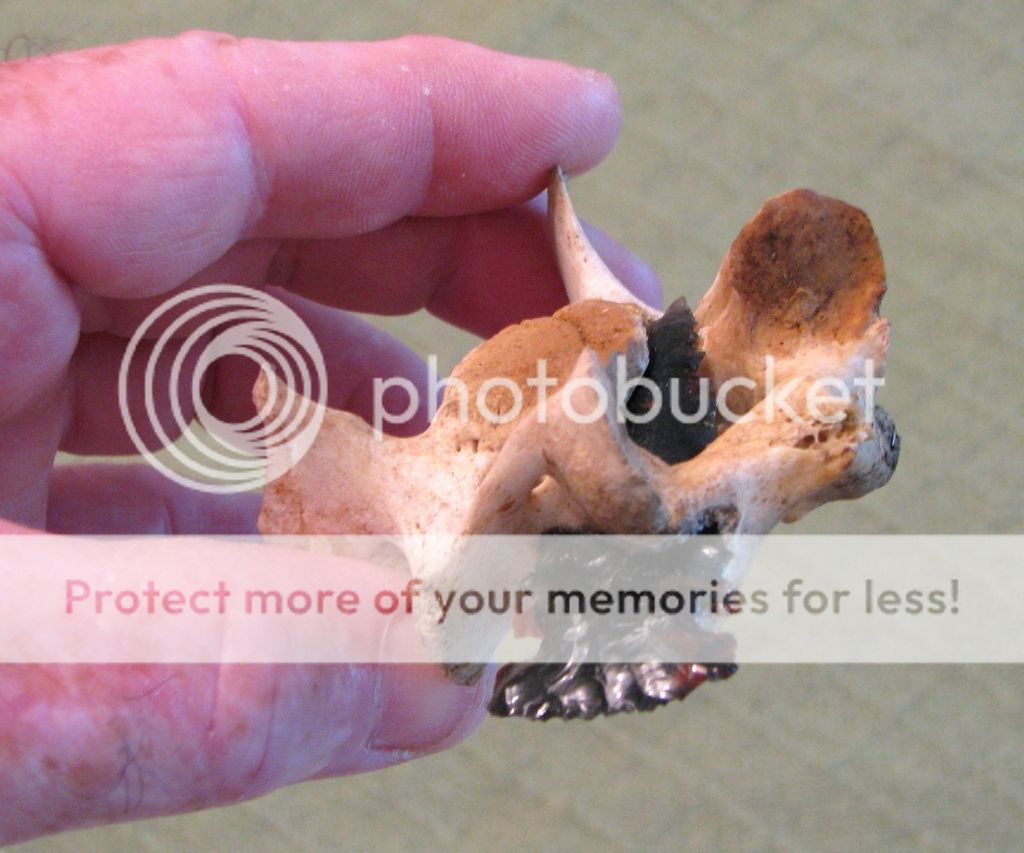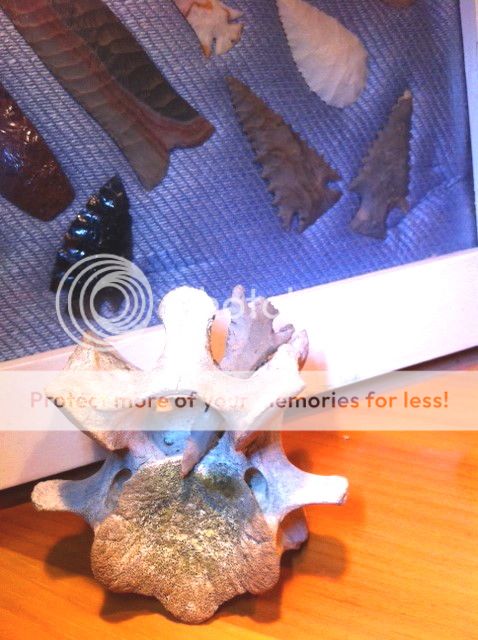You are using an out of date browser. It may not display this or other websites correctly.
You should upgrade or use an alternative browser.
You should upgrade or use an alternative browser.
Finding signs that someone else has been hunting my property!
- Thread starter Armored farmer
- Start date
- Status
-
Not open for further replies.
Armored farmer
Member
Armored, I think your fine until you start finding scalps!
Good to know!
Lol
Armored farmer
Member
Arm-Farm, You just have wonder about guys who run around in Loin Cloths with "Pink" arrows?
And a 'lisp'.
.....perhaps that's why they no longer here?
I didn't think of that!
Armored farmer
Member
It's been fun.
I'm guessing this thread is about to get plugged.
I'm guessing this thread is about to get plugged.
double bogey
Member
Check this thread out.
http://discussions.texasbowhunter.com/forums/showthread.php?t=288753&highlight=artifacts
http://discussions.texasbowhunter.com/forums/showthread.php?t=288753&highlight=artifacts
SoonerMedic
Member
I think that depends on the state. We had a major drought in Oklahoma about 8 years ago. Lake levels dropped dramatically. People were all over the lakes and creeks with shovels and buckets looking for arrowheads. No one (that I know of) got any tickets. Many fields around our rivers over here get plowed and tilled. People walk them every year looking for arrowheads. And they find them.
8 Years ago? No way it was that long ago! Wasn't it only like 4? I remember it was only a few 4th's ago that I was sitting about 75 yards further in than I typically would at Lake Murray......I remember that it was really really bad. Hope we don't get a drought like that again for a long time.
Armored farmer
Member
Check this thread out.
Double bogey,
I checked that out. Very cool, thanks for putting that up.
Those guys have quite the dig going on.
double bogey
Member
I hunted a place on Pecan Bayou south of Brownwood I would like to prospect for artifacts on. Had everything required for an indian campground. Remember, they are not all arrowheads, as the bow wasn't invented until 1600 years ago. before that it was atlatls and spears were the weapons, back to 13,000 years in Texas.
I don't know him personally, but the guy that owns the place is a well respected giant gar guide.
I don't know him personally, but the guy that owns the place is a well respected giant gar guide.
Art Eatman
Moderator In Memoriam
Bows were not invented until around the time of Christ, per some of my readings about archaeology. Older points, depending on size, were either dart points (atlatl) or spear points. SFAIK, the so-called "bird points" were arrow heads for small game.
Overstreet's book is an excellent source: https://www.amazon.com/Official-Ove...488049115&sr=8-1&keywords=books+on+arrowheads
Overstreet's book is an excellent source: https://www.amazon.com/Official-Ove...488049115&sr=8-1&keywords=books+on+arrowheads
sage5907
Member
I also have a large arrowhead, spear point and ax collection that I really enjoy looking at. I grew up in western Oklahoma where there are many camp sites along the Canadian rivers. A friend was involved in finding a gravesite of one of Spanish explorer Onate's soldiers. The soldier's saddle and bridle were buried with him. The Juan de Onate expedition started on June 23, 1601 and came through my area and his journals described the Native American tribes, the terrain, the trees and wildlife. He retreated hastily to what would become New Mexico because the expedition was fearful of their lives. The natives didn't take kindly to having others trespassing on their land. Maybe the death of his soldier with an arrow in the back hastened their decision. Later he would become the first Spanish governor of New Mexico.
Last edited:
sage5907
Member
Art, according to my readings the Huns were making laminated bows in the 2nd millennium BCE. A millennium is 1000 years. If the Native American ancestry migrated from Asia as is said it would be logical that they had bows much earlier. I saw one article on Google that said the bow & arrow was invented in Africa 64,000 years ago. I guess they carbon dated the remains of a bow. No argument from me either way.
Last edited:
Idk, I've been told it takes a real man to wear pink.......imagine what kind of a man KILLS with pink...........perhaps that's why they no longer here?
I didn't think of that!
Armored farmer
Member
Dog Soldier
member
The Spanish Mines in Northern Utah's High Uinta Mountains lie just South of Fort Bridger. The Conquistadors mined the Peaks from the Mid 1500 until the Mid 1800s. Many artifacts such as Breast plates, swords and helmets were found by the Mountain Men fur trappers.
Jim Bridger had been shot in the back by Indian arrow. The arrow head remained in Jims back. He suffered constant pain. He found a Spanish Breast plate and never left his Fort without wearing it.
Jim Bridger had been shot in the back by Indian arrow. The arrow head remained in Jims back. He suffered constant pain. He found a Spanish Breast plate and never left his Fort without wearing it.
Flintknapper
Member
Jim Bridger had been shot in the back by Indian arrow. The arrow head remained in Jims back. He suffered constant pain.
For sure...... would not want an arrow in my back!



Dog Soldier
member
Do you knap Gun flints? A friend here has a big collection of artifacts. He has a Bison Head that was X-rayed at the hospital. It has a perfect arrow head and 4" of shaft at the base of the skull. Many of these heads have been dug up North East of here.
Last edited:
Art Eatman
Moderator In Memoriam
Damfino about the timing of the origin of the bow beyond what I read in an archeology article. If the early immigrants from umpteen thousand years ago had bows, they weren't found at dig sites. At some point the Bering land bridge went underwater (end of ice age? 10k years ago?) and immigration ended. Easily could be the AmerInds came up with the bow at a later date than elsewhere in the world.
As I understand it, the advent of the bow led to its replacement of the atlatl.
The weight of a point was a factor: For an arrow, light weight allowed a flatter trajectory and made it a longer-range weapon than the atlatl dart.
Sounds like today's discussions about the .45-70 vs. an '06 or .243.
As I understand it, the advent of the bow led to its replacement of the atlatl.
The weight of a point was a factor: For an arrow, light weight allowed a flatter trajectory and made it a longer-range weapon than the atlatl dart.
Sounds like today's discussions about the .45-70 vs. an '06 or .243.
.308 Norma
Member
Yeah, it kinda does, doesn't it? I wonder if the ancients argued about what weapon offered the best protection against bears - an atlatl dart, a bow and arrow, or a handful of red pepper dust.Sounds like today's discussions about the .45-70 vs. an '06 or .243.
Armored farmer
Member
Oh no.the best protection against bears - an atlatl dart, a bow and arrow, or a handful of red pepper dust.
double bogey
Member
I am not an archaeologist. I have read on a couple of forums the 1600 yrs ago on the bow invention timeframe. I could easily be wrong. I could also see the bow invented at a different time in the Americas than somewhere else in the world. Anyways, I would love to have a good place to find artifacts.
Flintknapper
Member
I am not an archaeologist. I have read on a couple of forums the 1600 yrs ago on the bow invention timeframe. I could easily be wrong. I could also see the bow invented at a different time in the Americas than somewhere else in the world. Anyways, I would love to have a good place to find artifacts.
I'm thinking you are missing a 'zero' there perhaps?
http://outdoorchannel.com/article.aspx?id=17727
Art Eatman
Moderator In Memoriam
Flintknapper, the 1,600 number corresponds to archaeological articles I have read about the use of the bow in the US. There was no mention of its use in other parts of the world.
I guess that one way to find a reasonable conclusion would be to compare age and size of points. That of course assumes that the smaller points are arrowheads; larger points are dart or spear points. Overstreet's book shows life size photos and the ages of points.
I must admit that my Folsom point could possibly work as an arrow head as well as a dart point. My Firstview point seems most likely to have been a spear point, since the edges aren't sharp enough for a knife.
Interesting difference in physical sizes between 2,000 BC and the AD 1600s. I have some sandals associated with points of some 4,000 years ago. Too small for anybody taller than maybe five feet. Figures, since many of the little shelter caves along the Rio Grande are too small for today's six-footers yet the roofs are soot-covered and there are piths from chewed lecheguilla. While some dig sites have contained needles, fish hooks, woven materials and fire-starter bow drills and hearths, I've seen/heard no mention of bows from 4,000 years ago.
So: Damfino.
I guess that one way to find a reasonable conclusion would be to compare age and size of points. That of course assumes that the smaller points are arrowheads; larger points are dart or spear points. Overstreet's book shows life size photos and the ages of points.
I must admit that my Folsom point could possibly work as an arrow head as well as a dart point. My Firstview point seems most likely to have been a spear point, since the edges aren't sharp enough for a knife.
Interesting difference in physical sizes between 2,000 BC and the AD 1600s. I have some sandals associated with points of some 4,000 years ago. Too small for anybody taller than maybe five feet. Figures, since many of the little shelter caves along the Rio Grande are too small for today's six-footers yet the roofs are soot-covered and there are piths from chewed lecheguilla. While some dig sites have contained needles, fish hooks, woven materials and fire-starter bow drills and hearths, I've seen/heard no mention of bows from 4,000 years ago.
So: Damfino.
- Status
-
Not open for further replies.


